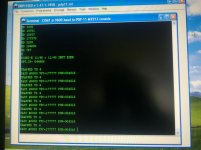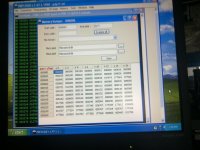Hi All;
Dave, Thank You for the Synopsis of the problem..
Here is the Particular Link --
http://www.retrocmp.com/images/stories/joerg/pdp11_diagnostic_database/////modules/CQKC.html
and here is the General Link --
http://www.retrocmp.com/images/stories/joerg/pdp11_diagnostic_database////modules.html
Under CQKC the one I think I used was cqkce0_11-45.bin ..
We can try one of the other two that are Listed, if they would be closer to either of the PDF's..
But, what bothers me is what I ran had a 'D' in front of it, I think they are the same but maybe not..
I will copy and run all three and report what I find back to You..
OK, it's the same program, just with a D in front of it, I will try the other two versions and report back..
I am running DMMZH Core Heating Test, between running different versions of CQKC, so to Destroy an remnants of the previous program..
OK, Loaded the next one, it's basically the same..
CQKCG1.BIC
DCQKC-G 11/40 & 11/45 INST EXER
OPT.CP=044406
OPT.DEV.=000001
TRAPPED TO 4
PASS #0000 VPC=177777 PSW=014042
With DCQKG2 it's different..
DCQKCG2 11/40 & 11/45 INST EXER
OPT.CP=044406
OPT.DEV.=000001
TRAPPED TO 4
PASS #0000
(After CONT)
PASS #0000 VPC=003476 PSW=000350
This is more Encouraging !!
I am going to put in the Memory Management and see if there is any Difference in all three Programs..
With Memory Management I cannot get any of the Serial Cards to go to Console mode, Two of the Cards Show Address Error Lite, but one Does not, it's an M9312 , BRD #1..
I am Addressing at 765020.. And it shows Data there.. And Not like Memory which shows either all One's or all Zero's, until I write to it..
Has Anyone Set up a serial Card for Memory management Addressing ?? I don't think it's any different..
HELP !!!!!!!!!!!!
THANK YOU Marty


